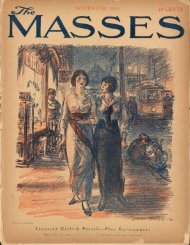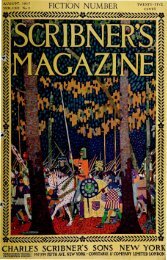View PDF - Brown University Library
View PDF - Brown University Library
View PDF - Brown University Library
- No tags were found...
Create successful ePaper yourself
Turn your PDF publications into a flip-book with our unique Google optimized e-Paper software.
12 In Moroccoministers it, the European colonists madeshort work of the beauty and privacy ofthe old Arab towns in which they establishedthemselves.On the west coast, especially, where theMediterranean peoples, from the Pheniciansto the Portuguese, have had tradingpostsfor over two thousand years, theharm done to such seaboard towns asTangier, Rabat and Casablanca is hard toestimate. The modern European colonistapparently imagined that to planthis warehouses, cafes and cinema-palaceswithin the walls which for so long hadfiercely excluded him was the most impressiveway of proclaiming his domination.Under General Lyautey such views areno longer tolerated. Respect for nativehabits, native beliefs and native architectureis the first principle inculcated inthe civil servants attached to his administration.Not only does he require thatthe native towns shall be kept intact, andno European building erected withinthem; a sense of beauty not oftenvouchsafed to Colonial governors causeshim to place the administration buildingsso far beyond the walls that themodern colony grouped around them remainsentirely distinct from the old town,instead of growing out of it like an uglyexcrescence.The Arab quarter of Rabat was alreadyirreparably disfigured when General Lyauteycame to Morocco; but ferociousold Sale, Phenician counting-house andbreeder of Barbary pirates, had beensaved from profanation by its Moslemfanaticism. Few Christian feet had enteredits walls except those of the prisonerswho, like Robinson Crusoe, slavedfor the wealthy merchants in its mysteriousterraced houses. Not till two or threeyears ago was it completely pacified; andwhen it opened its gates to the infidel itwas still, as it is to-day, the type of theuntouched Moroccan city—so untouchedthat, with the sunlight irradiating itscream-coloured walls and the blue-whitedomes above them, it rests on its carpetof rich fruit-gardens like some rare specimenof Arab art on a strip of old Orientalvelvet.Within the walls, the magic persists:which does not always happen when onepenetrates into the mirage-like cities ofArabian Africa. Sale has the charm ofextreme compactness. Crowded betweenthe river-mouth and the sea, its white andpale-blue houses almost touch across thenarrow streets, and the reed-thatched bazaarsseem like miniature reductions ofthe great trading labyrinths of Tunis orFez.Everything that the reader of the ArabianNights expects to find is here: thewhitewashed niches wherein pale youthssit weaving the fine mattings for whichthe town is still famous; the tunnelledpassages where indolent merchants withbare feet crouch in their little kennelshung with richly ornamented saddleryand arms, or with slippers of pale citronleather and bright embroidered babouches;the stalls with fruit, olives, tunny-fish,vague syrupy sweets, candles for saints'tombs, Mantegnesque garlands of red andgreen peppers, griddle-cakes sizzling onred-hot pans, and all the varied wares andcakes and condiments that the lady in thetale of the Three Calanders went out tobuy, that memorable morning in themarket of Bagdad.Only at Sale all is on a small scale:there is not much of any one thing, exceptof the exquisite matting. The tideof commerce has ebbed from the intractableold city, and one feels, as onewatches the listless purchasers in her littlelanguishing bazaars, that her long animosityagainst the intruder has ended bydestroying her own life.The feeling increases when one leavesthe bazaar for the streets adjoining it.An even deeper hush than that whichhangs over the well-to-do quarters of allArab towns broods over these silentthoroughfares, with heavy-nailed doorsbarring half-ruined houses. In a steepdeserted square one of these doors opensits panels of weather-silvered cedar on thecourt of the frailest, ghostliest of Medersas—mere carved and painted shell of a deadhouse of learning. Mystic interweavingsof endless lines, patient patterns interminablyrepeated in wood and stone andclay, all are here, from the tessellated pavingof the court to the honeycombing ofthe cedar roof through which a patch ofsky shows here and there like an inset ofturquoise tiling.










